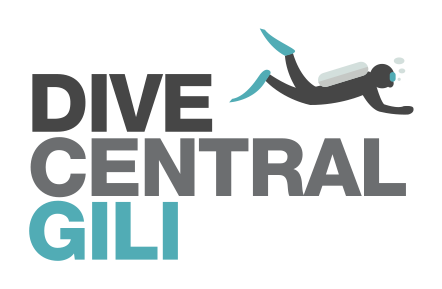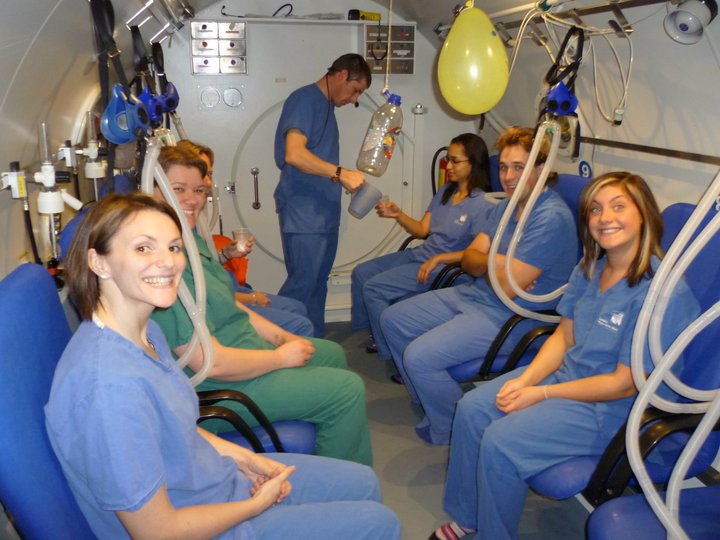Re-compression awareness - Get narked without getting wet!
Most of us (touch wood) will never experience what it's like to be inside a re-compression chamber. Unless the worst happens and we have an incident whilst diving, we will never know how the amazing docs at these places are able to fix us.
However, you can be re-compressed, just for fun, giving you an incredible insight in how this treatment works and also opening your eyes to just how easy it is to avoid a diving injury (or as we call it, the bends.) It also tests your ability when being affected by nitrogen narcosis. A feeling that you can only experience at a depth greater than 30m. In this dry environment, divers can see how they are effective and practice how to behave in a controlled way, helping them to become better divers.
Now I am not sure if you can get to book a dry dive out in Indonesia. However, when I worked in England, my dive club went on a dry dive to 50m with London Hyperbaric medicine (Whipps Cross, East London). Take part in a dry dive and receive a PADI chamber awareness certification on completing the course. Cool eh?
So what's it all about? Taking part in a dry dive will give you the opportunity to experience what it's like to be at depth, in a dry and safe environment. You will be tested to see your level of impairment when under the effects of nitrogen narcosis. Some diving accidents happen due to a diver not knowing how to cope when affected by nitrogen narcosis. Experiencing this before it happens to you in "real life" will help you know what is happening; therefore helping you cope better when in an underwater situation.
Spending time at the hyperbaric center will also familiarize you with the treatments they can offer, the procedures taken for someone who may have decompression sickness and the possible hazards related to operating/ using a recompression chamber. You also learn about oxygen therapy and how the chamber can be used to help heal patients who have tried numerous other treatments for their ailments. It rally is amazing stuff and helpful to so many people.
“What’s DCS anyway?
Decompression sickness, or the bends, is caused by bubbles which form in parts of the body and in the blood of a person who has pressure around them decrease too quickly. When you breathe at depth (under pressure) the gasses dissolve into your blood stream. If a diver ascends nice and slowly the dissolved bubbles will disperse back to the divers lungs. If the diver ascends too quickly, the bubbles do not have time to escape, causing them to get stuck. Imagine a coca cola bottle that has been shaken up. If you unscrew the lid slowly, the liquid doesn’t fizz up, because you are releasing the increased pressure at a controlled rate. Bubbles can block blood flow and the supply of oxygen to organs causing quite severe symptoms.”
You will benefit from this experience massively, taking away with you knowledge that will help you in your future dives. For many people, luckily for them, they will never experience what it is like to have DCS, or to even know someone who has suffered from it. This tends to lead divers to feel like it won't happen to them, like it is an uncommon occurrence. This in fact, as a lot of us may know from personal experiences, is not the case. Any one can be affected by DCS, whether it be due to diver error or due to medical issues, or due to just a few things not being quite right. The presentation given at the start of your dry dive will open your eyes and your mind to what may happen during diving. After all, it is a dangerous sport, but one that can be 100% safe if you follow the correct procedures at all times.
The "Dive"
After an interesting DCI briefing and a tour of the facility, you will change into scrubs, 100% cotton hospital garments that are extremely comfy (and also not flammable!), and you will be shown to a spot inside the chamber. You will be given a glass of water that will help you to equalize your ears during the descent. Once the door is closed, you will be taken down to depth (depending on which dive you signed up for). You may feel the temperature start to rise. For the science part - see below!
“The Science bit: Swelteringly hot to icy cold in a jiffy!
The temperature change in a recompression chamber is due to a process called the adiabatic process. Air is compressed into the chamber when we are on our way to depth. This means that the original one chamber’s worth of air is now up to 5 chamber’s worth of air (1ATA-5ATA, surface to 40MSW) The air is now dense and a lot more air particles are bouncing around off of each other causing friction and, therefore, heat.
Heading back to the “surface” is the opposite effect. Compressed air is released to lower the pressure. There are now less air particles bouncing off of each other, and so less heat. It gets quite chilly! But don’t worry, the guys will give you a blanket!
If humidity is high within the chamber, this can cause fogging. You may see some clouds during your ascent! Cool, eh?!”
Once at the planned depth, this is where the fun starts. You are given certain tasks to complete that are designed to measure your level of capability whilst being affected by nitrogen narcosis. Simple tasks can be quite difficult when under the influence of narcosis, it is a fun way to experience this in a controlled environment.
“Nitrogen Narcosis, or being “Narked” is the intoxicating effect when a diver breathes nitrogen under pressure. This can occur at depths as shallow as 30m. You may feel lightheaded, anxious, may experience poor judgement and decreased co-ordination. You may also experience hallucinations! Divers have described narcosis as feeling drunk and high on life. To alleviate these symptoms, reduce your depth. ”
You may be asked to write down some of your personal details, your name, date of birth, asked to complete some simple arithmetic, and to catch a falling object against a wall. These tasks sound simple, but are affected massively by narcosis. Your voice will also sound just like you have breathed in a load of helium, and once you start giggling you can't stop! Lots of fun!
On coming back up to the surface, the pressure in the chamber is slowly reduced. You will breathe 100% oxygen to help with off-gassing. Snuggle in your blanket and fell the pressure change as you come back to the surface.
Once you are back at normal pressure/ level the door is opened and you are back to normal. You have a debrief about what happened and how you reacted, helping you to think about how you would react in a real diving situation.
Thinking of booking the course? Go for it! You won't regret it and you will want to push other fellow divers to do so too!
- Medical requirements:
RSTC medical statement or in date certificate signed by a doctor.
If you have any questions about this or about a medical condition you may have you can call the chamber in advance. - Prerequisites:
Minimum age 16 years old
PADI Open certification or equivalent certification from other organisations - What to bring:
Proof of qualification
Logbook
Dive computer
Scrubs will be provided - If you have more questions or you would like to find out more visit their website at
http://www.londonhyperbaric.com/dry-dive/



